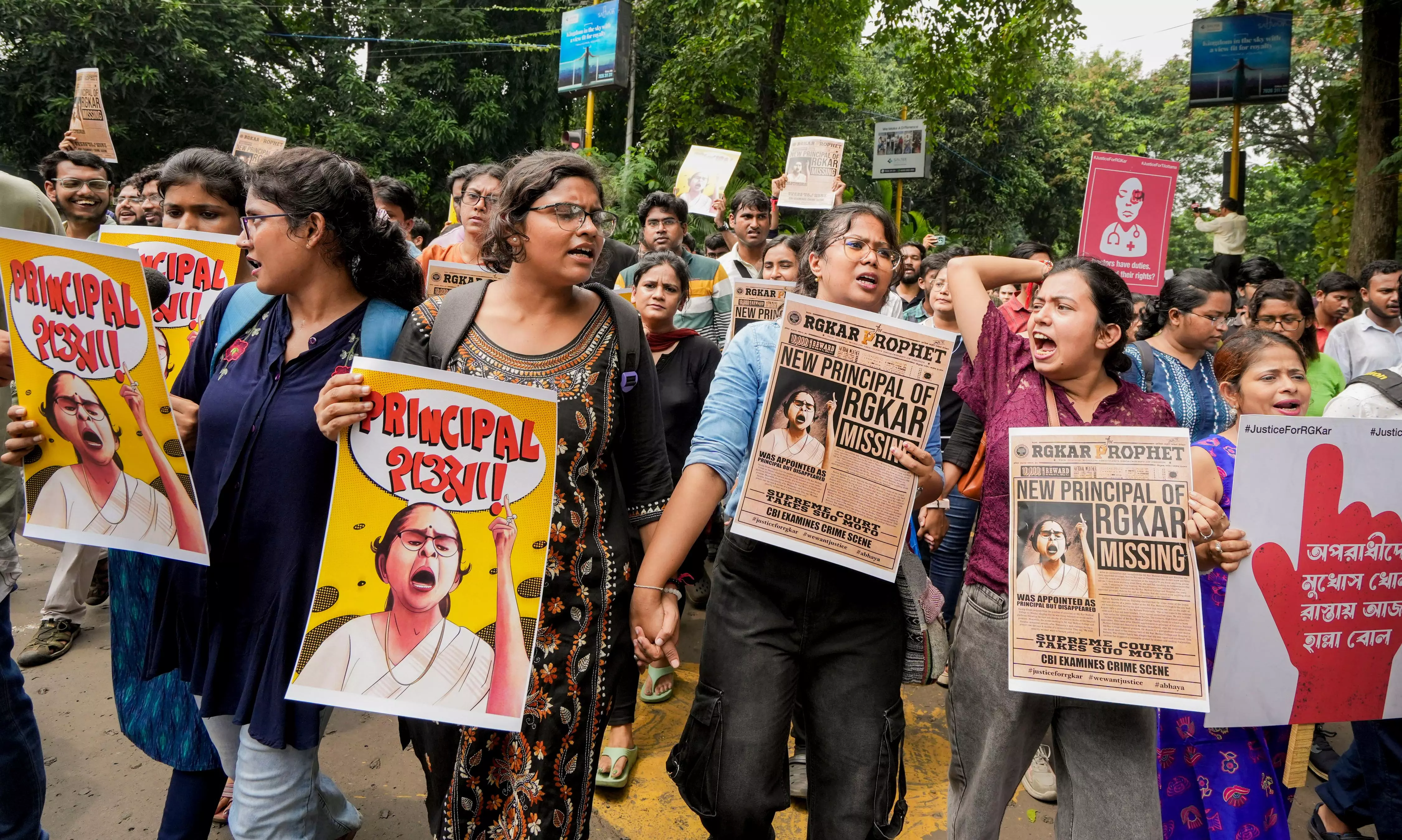
Kolkata rape-murder | Live-streaming of Supreme Court hearing raises eyebrows
Even if it is not the actual trial, the court should not have allowed the live streaming of the case proceedings, respecting the dignity of the victim, said a political commentator

The live-streaming of the Supreme Court hearing on the progress of the CBI probe into the RG Kar rape and murder case has once again raised the question whether court proceedings of such sensitive cases should be carried out in full public view.
As per Section 327 of the Code of Criminal Procedure, in-camera trials are mandated for the rape case.
The live-streaming of the RG Kar case proceeding has been allowed possibly because currently the CBI is only submitting the progress report. However, there have been objections to it from some quarters.
‘Respect victim’s dignity’
“Even if it is not the actual trial, the court should not have allowed the live streaming of the case proceedings, respecting the dignity of the victim. Moreover, this has (live streaming) also provided an opportunity for the lawyers to indulge in grandstanding,” said political commentator Debashish Chakrabarti.
He was pointing out the reprimanding of lawyer and BJP leader Koustav Bagchi by CJI DY Chandrachud during Monday’s hearing. “Are you trying to address the gallery outside the court? I have been noticing your demeanour for the last two hours,” the CJI told the lawyer.
He also cautioned the lawyer to lower his voice. “Can you first lower your pitch? Listen to the Chief Justice, lower your pitch. You are addressing three judges in front of you, not the large audience watching these proceedings on the video conferencing platform,” said the CJI.
Attorney General KK Venugopal proposed in 2018 that matters of national security, protection of confidential or sensitive information, or those that may provoke sentiments, arouse passions, and provoke enmity among communities should be excluded from the live-streaming of the top court proceedings.
What’s excluded from live-streaming?
Notably, as per the Supreme Court rules for live-streaming, the cases concerning sexual offences, including proceedings instituted under Section 376, Indian Penal Code, 1860 (IPC), are excluded from live-streaming.
The model rules clearly state that the following will be excluded from live streaming:
i. Matrimonial matters, child adoption and child custody including transfer petitions arising thereunder.
ii. Cases concerning sexual offences, including proceedings instituted under Section 376, Indian Penal Code, 1860 (IPC).
iii. Cases concerning gender-based violence against women.
iv. Matters registered under or involving the Protection of Children from Sexual Offences Act, 2012 (POCSO) and under the Juvenile Justice (Care and Protection of Children) Act, 2015.
v. Matters registered under or involving the Medical Termination of Pregnancy Act, 1971.
vi. In-camera proceedings as defined under Section 327 of the Code of Criminal Procedure, 1973 (CrPC) or Section 153 B of the Code of Civil Procedure, 1908 (CPC).
vii. Matters where the bench is of the view, for reasons to be recorded in writing that publication would be antithetical to the administration of justice.
viii. Cases, which in the opinion of the Bench, may provoke enmity amongst communities likely to result in a breach of law and order.
ix. Recording of evidence, including cross-examination.
x. Privileged communications between the parties and their advocates; cases where a claim of privilege is accepted by the Court; and non-public discussions between advocates.
xi. Any other matter in which a specific direction is issued by the bench or the Chief Justice.
Aimed at ensuring transparency
Committing to live-streaming cases in 2018, the Supreme Court finally began broadcasting this year the cases of vital public importance that are not constitutional bench matters, marking a significant step towards greater transparency and public engagement in the judiciary.
In 2018, the Supreme Court delivered a landmark judgment in the Swapnil Tripathi and Others v Supreme Court of India case, permitting live-streaming of court proceedings. The judgment emphasised the need for transparency and access to justice, suggesting that live-streaming could help demystify the judicial process for the public.
The court identified two types of cases to be live-streamed: matters of constitutional and national importance. It also categorically excluded several types of cases from being live-streamed, such as matrimonial matters, sexual assault cases, and those involving minors.
The judgment, delivered by then Chief Justice of India Dipak Misra and Justices AM Khanwilkar and DY Chandrachud, was widely celebrated. Despite the resounding approval, there was little progress in making live-streaming a reality until the onset of the COVID-19 pandemic, which compelled the somewhat rigid Supreme Court to quickly adapt to new technology.
Virtual hearings during COVID
As virtual hearings began during COVID, the Supreme Court regularly started live-streaming cases of constitutional importance, limited to those heard by constitution benches of five or more judges.
High-profile cases live-streamed during this time included petitions seeking legal recognition for same-sex marriages, the Maharashtra political crisis, the abrogation of Article 370, and the grant of minority status to Aligarh Muslim University.
After experimenting with live-streaming constitution bench matters, the Supreme Court has now decided to live stream matters of national importance.
Strictly for viewing purpose
Sources within the Supreme Court clarified that the cases being live-streamed were strictly for viewing purposes only. Any reproduction of the audio or video of the proceedings will be considered “unauthorised reproduction”, and the court administration is free to initiate action against it
This aligns with the rules established by several high courts that live-stream their proceedings on YouTube. The decision aims to reduce the traffic on the virtual hearing meeting link, which often reaches its maximum capacity of roughly 1,000 people when significant cases are listed for hearing.

